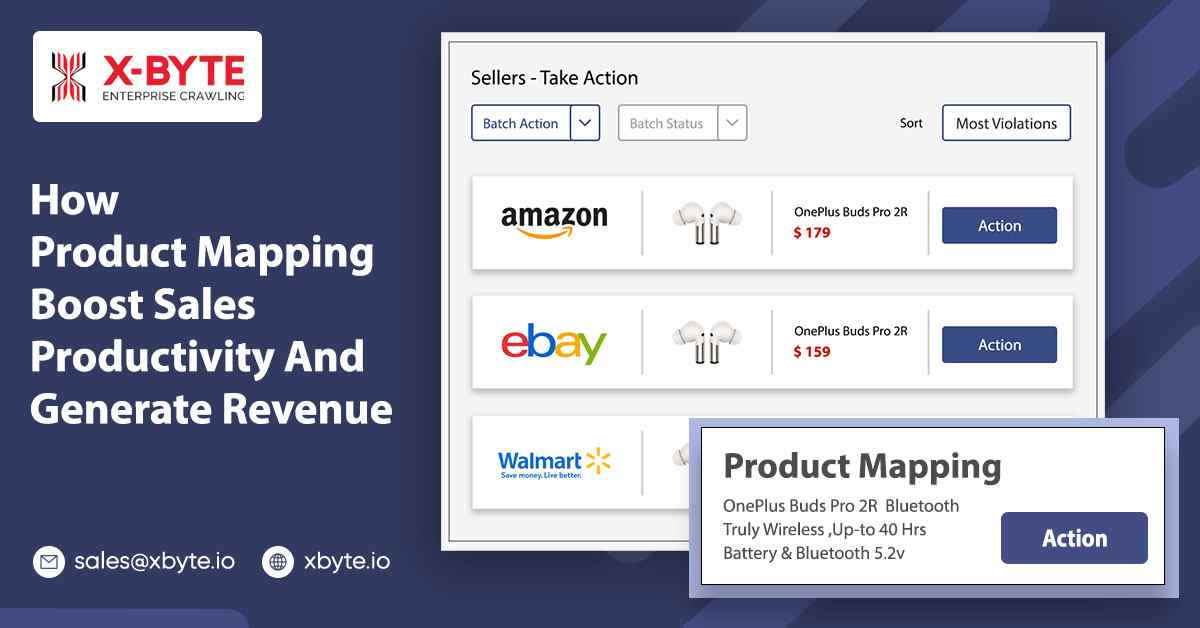
In 2022, increasing sales productivity was one of the fastest ways to increase sales. The good news is that it’s not just a matter of technology. It is also about changing the way your team works and thinks.
One of the best steps to improving sales productivity is product mapping. It is a technique used to visually represent all the products and services you provide and the relationships between them. This can help you see how your products fit together and how they relate, which can help you improve sales productivity.
This article will explain how product mapping works and how sales teams can use it to improve their productivity.
What Is Product Mapping?

It is a technique that can help you identify and prioritize features for your product. It visually represents the relationship between features and functions. A product map’s purpose is to communicate each feature’s value and how it affects other aspects of the product.
Product maps are usually created during an agile sprint planning meeting but can also be used as a standalone tool.
The main advantage of using a product map is that it helps teams make better decisions about what to build next. If you have ever worked on a project with too much work in progress (WIP), you know how challenging it can be to prioritize features when you have too much.
Why Is Product Mapping Necessary?

Product mapping is the process of mapping out the features and benefits of a particular product. It is necessary for several reasons:
● It helps you understand what features people want from your products. This will help you make better decisions about future product development.
● It helps you understand how to differentiate yourself from competitors who offer similar products. This will give you an edge over them and make it easier for customers to choose your product over theirs.
● It helps you generate new ideas for new or existing products that weren’t previously considered in the process of creating these products in the first place.
● These ideas may have come from other people, or they may have been generated by looking at trends in the industry or society as a whole. They could also come from personal experience or observation while using your products or others’ similar ones.
Sales Productivity Challenges

Sales productivity is a critical element of a company’s overall success. Salespeople are tasked with the responsibility of generating revenue and growing the business. When salespeople are not productive, it can lead to missed opportunities and other problems. Here are the three significant challenges salespeople face.
1. Competing With Competitors
The sales productivity challenges facing today’s salespeople are many, but the most important is to compete with the competition.
The competition for sales is fierce, and the number of competitors keeps increasing daily. To make matters worse, more and more customers are taking their business online to find products and services that meet their needs.
In addition to competing with other companies in your industry, you must also contend with customer expectations that continue to rise. As customers become increasingly savvy about technology, they expect companies to provide instant answers and information whenever they want.
2. Lack of Time
We all have 24 hours a day and 168 hours a week. Time is limited, and it’s not enough. The only way to overcome this challenge is by utilizing your time wisely and effectively. You must determine your priorities and spend time on those things before moving on to other things.
For example, if you want to be more productive at work but do not have enough time for personal tasks such as exercise or cooking dinner for yourself, then that needs to be your priority so that you can find time for it later in the day or week.
3. Not Getting The Response from Prospect
Another more significant challenge for a salesperson is needing more responses from prospects. One of the best ways to deal with these obstacles is:
● Know your product or service.
● Know your prospect
● Build rapport with your prospect.
● Be prepared for objections.
4. Incapability to Track Deals
The inability to track deals accurately can lead to inaccurate pictures of your team’s performance. Thus, you need real-time data to see what’s happening at each stage of the deal. So you can make better decisions about how you should approach it and how much time and effort should be allocated to each segment.
5. Less Automation
Less automation is one of the most significant sales productivity issues. With so many tools available to help you get things done faster and more efficiently, why are you not using them? You may be afraid they will remove your existing workflow, but this will be fine with the right tool.
It is time to stop relying on repetitive manual processes and start automating everything possible in your business!
Top 6 Ways How Product Mapping Can Boost Sales Productivity

A product map visually represents your product, highlighting the different features and user personas. It is a great way to communicate the value of your product to others, especially if they have little experience with it.
A product map can help you organize your sales team and identify the best ways to approach each customer with the right product at the right time. A well-designed product map can be used to plan and communicate with users, stakeholders, and other team members. Here are six ways a product map can improve your sales productivity:
1. Uncover Opportunities for upselling and cross-selling.
Product mapping shows you which products are often brought together- and why. You can use this information to identify opportunities to sell related products, whether they are items that go together or complementary services or products with similar benefits.
For example, if someone is looking at a $99 product, you might be able to suggest they also buy the $199 product that goes along with it.
2. Identify Common Question
Product mapping is a great way to organize your product catalog and discover what questions people ask about your product. This helps you understand how people see these products and how they want to use them. Information can help you create content that addresses your customers’ needs so that they become more engaged with your brand.
3. Map Out Your Sales Funnel
Businesses need to have clear and easy-to-follow sales funnels because it makes it easier for customers to purchase from them without any hassle or confusion on their part. Mapping out your sales funnel also helps you identify gaps in the process so that you can improve upon it by adding more steps or removing unnecessary ones altogether. Product mapping can also be an effective tool for creating or updating your sales funnel.
4. Improve Product Presentations
Presenting your product to potential customers is a crucial part of selling. But what if you spend hours preparing and presenting the perfect product, and they still need to buy it?
The problem may be that you need to speak to their needs. Once you understand those needs, you can better communicate why your product is the right choice for them.
Product mapping visually represents how your product fits into the customer’s workflow. It helps you identify gaps where your product can fill in those gaps and create value for the customer.
5. Provide Better Support for Your Sales Team
The main goal of product mapping is to provide a comprehensive overview of your company’s products and services. This includes an explanation of all the components that make up the system, what they do, and how they work together.
It also explains how each component fits into the big picture and contributes to your business’s overall success. The more detailed this information is, the easier it will be for your sales team to understand how everything works and how each component relates to the other.
6. Help Increase Revenue Per Customer
Product mapping helps you know what particular product customers are buying most often. This, in turn, helps you determine which product features will satisfy those needs. This leads to increased revenue per customer, which means more profits for your business.
Final Thought
Product mapping is a great way to understand the customer journey and needs. It helps you discover opportunities, match products with user needs, and identify differentiators in your product portfolio. By mapping out your products and services, you can create a holistic view of how they fit into your customers’ lives. It is also a great way to get everyone on the same page about what is essential for the business in the future.
